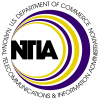Data & Mapping

Biden-Harris Administration Awards More Than $5.5 Million to Delaware in ‘Internet for All’ Planning Grants
The Department of Commerce’s National Telecommunications and Information Administration (NTIA) awards Delaware its first “Internet for All” grants for deploying high-speed Internet networks and developing digital skills training programs under the Biden-Harris Administration’s Internet for All initiative.

Biden-Harris Administration Awards More Than $5.7 Million to Iowa in ‘Internet for All’ Planning Grants
The Department of Commerce’s National Telecommunications and Information Administration (NTIA) awards Iowa with its first “Internet for All” grants for deploying high-speed Internet networks and developing digital skills training programs under the Biden-Harris Administration’s Internet for All initiative.

Biden-Harris Administration Awards More Than $6.4 Million to North Carolina in ‘Internet for All’ Planning Grants
The Department of Commerce’s National Telecommunications and Information Administration (NTIA) awards North Carolina with its first “Internet for All” grants for deploying high-speed Internet networks and developing digital skills training programs under the Biden-Harris Administration’s Internet for All initiative.

Biden-Harris Administration Awards More Than $6.4 Million to Georgia in ‘Internet for All’ Planning Grants
The Department of Commerce’s National Telecommunications and Information Administration (NTIA) awards Georgia its first “Internet for All” grants for deploying high-speed Internet networks and developing digital skills training programs under the Biden-Harris Administration’s Internet for All initiative.
$42.5 billion won’t be enough to close the US broadband gap
The Federal Communications Commission (FCC) released the first version of its new broadband map, marking a major step toward the distribution of $42.5 billion in funding for network expansions across the country. The maps are set to be used by the government to calculate which states will get the most money from the Broadband Equity, Access, and Deployment (BEAD) Program, with more funding going to those areas with the most unserved locations.
First look: Summary of the New FCC Broadband Maps
Overall, there are 112 million Broadband Serviceable Locations (BSLs) in the country (excluding territories). Of those, 7.15% of the BSLs are Unserved, which is 8 million. 5.2% of the BSLs are Underserved, or 5.8 million nationally. The Unserved and Underserved numbers provided are how I expect the calculation to be done for the BEAD program: it excludes LEO satellite service and also excludes service provided over unlicensed fixed wireless. It’s important to remember that the denominator in these calculations is BSLs, not housing units. BSLs include small businesses.
Broadband Makes US Better: Lessons from the Lone Star State
In Texas, many communities have leveraged creative financing methods for assessing and installing broadband in their communities. If effectively deployed, incoming federal and state broadband funding will create opportunities to bridge longstanding access gaps in low-income and rural communities. The report provides key recommendations for federal, state, local, nonprofit, and community leaders. For federal leaders, the report recommends the following:
Reaction to FCC's New National Broadband Maps
“Today is an important milestone in our effort to help everyone, everywhere get specific information about what broadband options are available for their homes, and pinpointing places in the country where communities do not have the service they need,” said Federal Communications Commission Chairwoman Jessica Rosenworcel. “Our pre-production draft maps are a first step in a long-term effort to continuously improve our data as consumers, providers and others share information with us.
Broadband: Bucking the Inflationary Trend
USTelecom's third Broadband Pricing Index documents continued substantial price reductions for both the most popular and highest-speed broadband service offerings. Over the past year, as overall inflation reached deeper into consumers’ wallets, broadband prices resisted. In fact, adjusting for inflation, prices for providers’ most popular broadband service dropped by 14.7% from 2021 to 2022. Similarly, prices for the fastest-speed services dropped by 11.6%.
Infrastructure Investment and Jobs Act Anniversary: Reflecting on a Major Year of Progress
One year ago, I was standing on the South Lawn of the White House alongside a bipartisan group of lawmakers watching President Biden sign the Infrastructure Investment and Jobs Act (IIJA), infusing billions of dollars for an unprecedented national broadband deployment effort. We knew at the time it was a historic moment.

